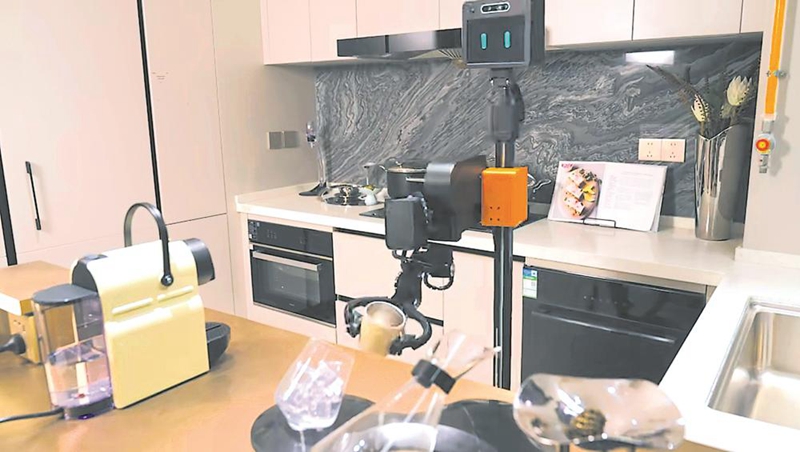




- BRNN
- BRI News
- BRNN News
- Database
Official Documents Polices and Regulations
Inter-government Documents International Cooperation BRI Countries
Business Guide Economic Data BRI Data
Trade
Investment Projects Latest projects
Cases - Content Pool
Konka-1, an ultra-lightweight humanoid robot considered to be the first of its kind in China and the third worldwide, made its debut at the Chengdu Science and Technology Ecological Island in Chengdu, capital of southwest China's Sichuan Province, on Oct. 28, 2024.
Independently developed by a humanoid robot innovation center in Chengdu, the robot has set multiple records upon its debut.

An ultra-lightweight humanoid robot named Konka-1 demonstrates fetching and holding a cup. (Photo courtesy of the Chengdu Humanoid Robot Innovation Center)
It boasts the lightest complete machine in the world at 25 kilograms, while the industry average ranges between 60 kilograms and 250 kilograms; a maximum load of 5.5 kilograms, reaching the industry-leading level; the highest load ratio in the world at 0.22, more than five times higher than the industry average; and the longest battery life in the world at eight hours, compared to the industry average of around one hour, making it a technologically advanced and powerful ultra-lightweight humanoid robot.
As the first full-stack self-developed robot complete machine equipped with the "most powerful brain" of the Chengdu humanoid robot innovation center, Konka-1 is capable of quickly understanding task intentions, autonomously observing its surroundings, reasoning task processes, generating task processes, autonomously controlling limbs, and accurately completing tasks.
Konka-1 is an industrialization-oriented humanoid robot, with 60 percent of its components coming from local industrial chain enterprises in Chengdu.
The Chengdu Humanoid Robot Innovation Center owns the complete independent intellectual property rights to the humanoid robot.
Ultra-lightweight humanoid robot refers to humanoid robot products that meet criteria including a body weight of less than 30 kilograms, a battery life of over six hours, and a load ratio (maximum load/body weight) of over 0.1.
Such robots can be used in a wide range of scenarios, including in laboratories at universities and research institutes, concept verification centers, educational institutions, elderly care services, as well as emergency management.

Tel:86-10-65363107, 86-10-65368220, 86-10-65363106